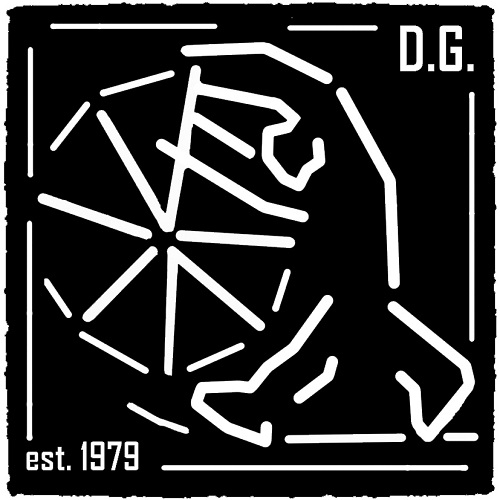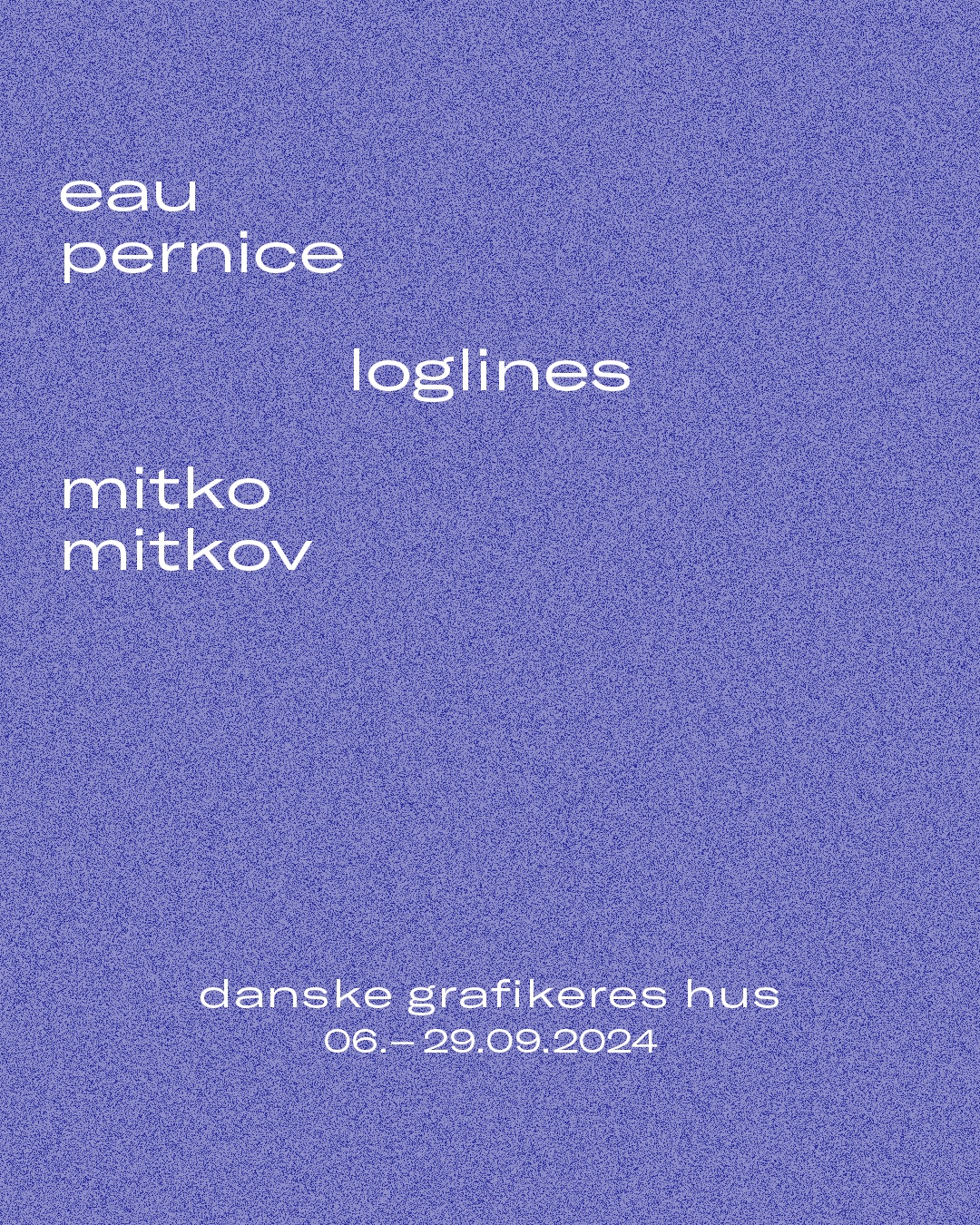“En logline er som forsiden af en bog; en god én får dig til at ville åbne den med det samme for at finde ud af, hvad der er indeni. Ved at identificere de ironiske elementer i din historie og sætte dem i en logline, kan det være, du opdager, at du ikke har det. Hvis ikke, er der måske ikke kun noget galt med din logline – måske er der også noget galt med din historie. Og måske er det tid til at gå tilbage og genoverveje den. At insistere på ironi i din logline er et godt sted at finde ud af, hvad der mangler. Måske har du ikke en god film endnu.”
Blake Snyder, “Save the Cat! – The Last Book On Screenwriting That You’ll Ever Need”
På en eftermiddag med drivende skyer finder en samtale om loglines sted mellem Eau Pernice og Mitko Mitkov på en bænk under et træ i Kongens Have, lige rundt om hjørnet fra udstillingsstedet. Dialogen kredser om anekdoter og tilfældige observationer fra begge kunstneres hverdag, men det synes svært for dem at komme frem til en fælles logline for deres kommende udstilling i Danske Grafikeres Hus. I stedet bliver deres sætninger til deres egne loglines, som forlader samtalerummet og begynder at strække sig ud over haven og mod Københavns udkant. Som slanger i luften. Snart vil de forlade byen og bevæge sig mod havet, hvor de vil opløses i vinden.
»Loglines« er en udstilling af grafiske værker af Eau Pernice og Mitko Mitkov. Værkerne i udstillingen er baseret på hverdagens dramaturgi og ønsket om at sikre sig hovedrollen i ens eget liv. Mitko Mitkov er en Hamburg-baseret billedkunstner og grundlægger af Bad Boy Jesus City Swimmers Club – en kreativ, landfast svømmeklub, der bringer folk sammen til kunstneriske aktiviteter og mange andre formål. Eau Pernice er en dansk billedkunstner, der tidligere hed noget andet. Hendes praksis kredser om spørgsmål om iscenesættelse og konstruktion af tid og udtrykkes gennem tidsbaserede medier, billeder og objekter. Begge kunstnere er interesserede i fortællingens mange facetter og den fine grænse mellem fiktion og virkelighed.
* * *
“A logline is like the cover of a book; a good one makes you want to open it, right now, to find out what’s inside. In identifying the ironic elements of your story and putting them into a logline, you may discover that you don’t have that. Well, if you don’t then there may not only be something wrong with your logline – maybe your story’s off, too. And maybe it’s time to go back and rethink it. Insisting on irony in your logline is a good place to find out what’s missing. Maybe you don’t have a good movie yet.”
Blake Snyder, “Save the Cat! – The Last Book On Screenwriting That You’ll Ever Need”
On an afternoon with drifting clouds, a conversation about loglines between Eau Pernice and Mitko Mitkov is taking place on a bench under a tree in Kings Garden, right around the corner of the exhibition space. The dialogue spins around anecdotes and random observations from both artists’ everyday lives. Still, it seems difficult for them to formulate a logline for their upcoming exhibition at the Danske Grafikeres Hus. Instead, their sentences become loglines of their own that leave the realm of the conversation and start stretching, expanding over the garden and towards the outskirts of Copenhagen. Like snakes in the air. Soon, they will leave the city and move towards the sea, where they will emulsify with the wind.
»Loglines« is an exhibition of graphic works by Eau Pernice and Mitko Mitkov. The works in the exhibition are based on the dramaturgy of everyday life and the desire to secure the role of the protagonist in one’s own life story. Mitko Mitkov is a Hamburg-based visual artist and founder of the Bad Boy Jesus City Swimmers Club – a creative, landlocked swimming club that brings people together for artistic activities and many other reasons. Eau Pernice is a Danish visual artist who used to go by a different name. Her practice centers around questions of staging and construction of time and is expressed through time-based media, images, and objects. Both artists are interested in the multitudes of storytelling and the fine line between fiction and non-fiction.

